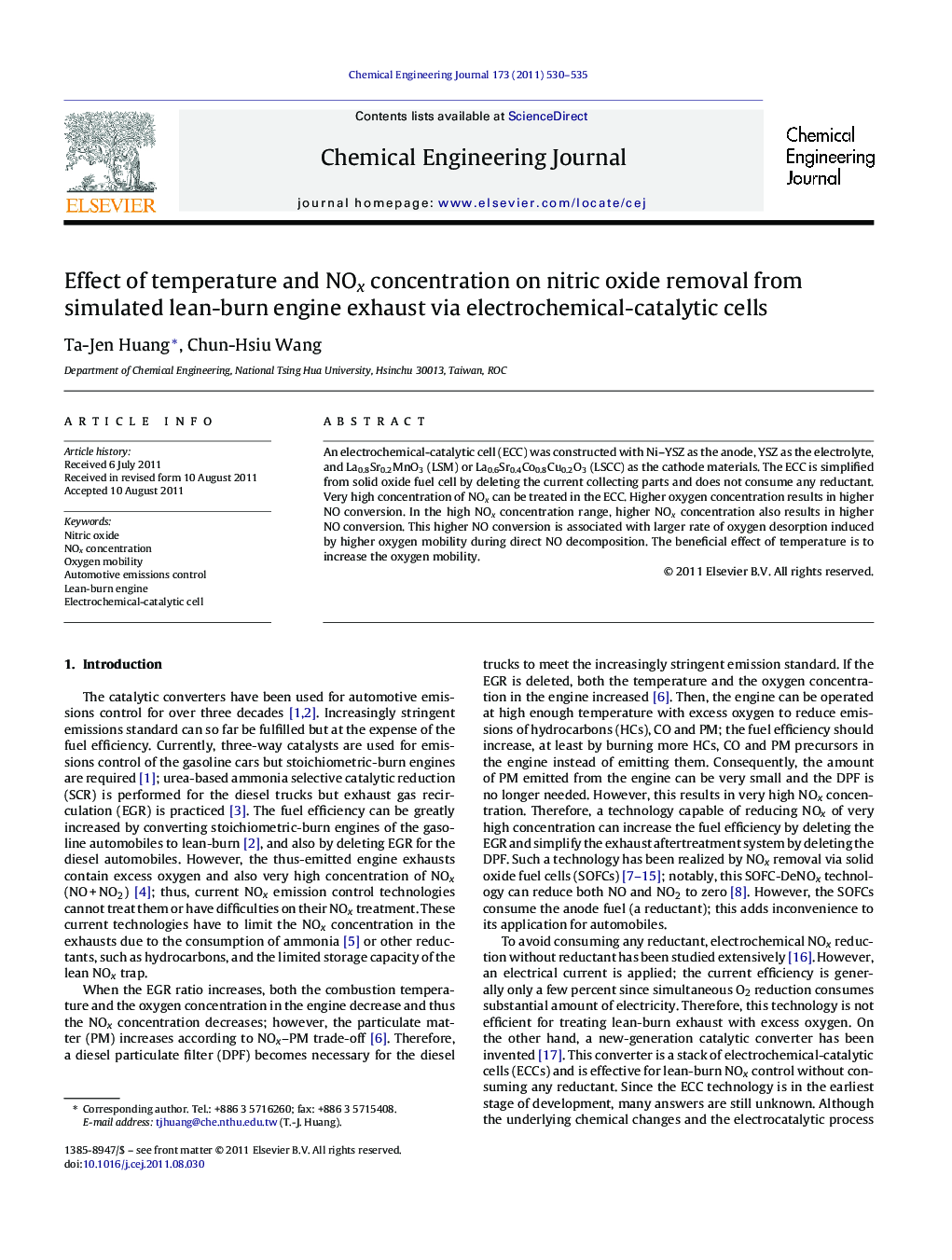| Article ID | Journal | Published Year | Pages | File Type |
|---|---|---|---|---|
| 150738 | Chemical Engineering Journal | 2011 | 6 Pages |
An electrochemical-catalytic cell (ECC) was constructed with Ni–YSZ as the anode, YSZ as the electrolyte, and La0.8Sr0.2MnO3 (LSM) or La0.6Sr0.4Co0.8Cu0.2O3 (LSCC) as the cathode materials. The ECC is simplified from solid oxide fuel cell by deleting the current collecting parts and does not consume any reductant. Very high concentration of NOx can be treated in the ECC. Higher oxygen concentration results in higher NO conversion. In the high NOx concentration range, higher NOx concentration also results in higher NO conversion. This higher NO conversion is associated with larger rate of oxygen desorption induced by higher oxygen mobility during direct NO decomposition. The beneficial effect of temperature is to increase the oxygen mobility.
► An electrochemical-catalytic cell can be used for automotive emissions control. ► The electrochemical-catalytic cell (ECC) does not consume any reductant. ► Very high concentration of NOx can be treated in the ECC. ► Higher oxygen and NOx concentrations can result in higher NO conversion. ► Higher NO conversion is associated with higher oxygen mobility.
